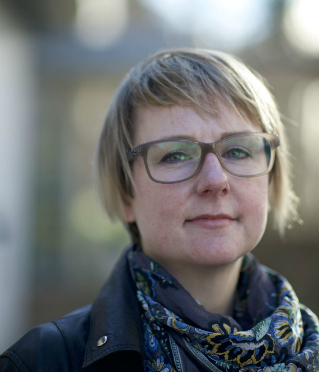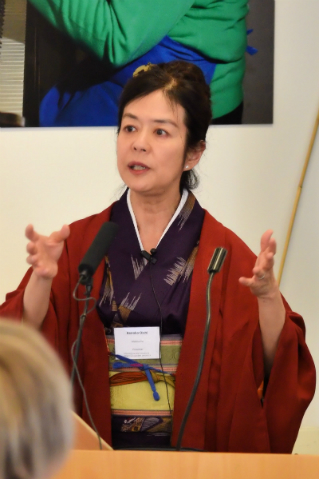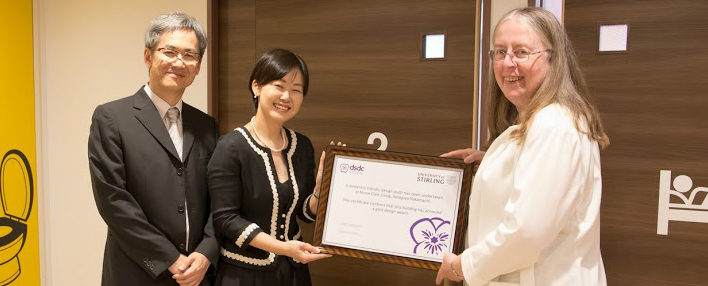The University of Stirling’s Dementia Services Development Centre (DSDC) has awarded its first international gold accreditation for excellence in dementia design.
Two buildings within a senior living development in the Tokyo suburb of Setagaya have received the recognition from the world-renowned centre.
Designed by Tokyu Land Corporation, the senior living development comprises 176 living units, a 75-bed care residence, accommodating people with dementia, and a multi-functional long-term care service to support patients who want to live at home. It also includes a community salon, which promotes intergenerational interaction, and a kindergarten.

Chief Architect Lesley Palmer, of the University of Stirling, said the project was "very exciting".
The University has been working with the company and their partner Mediva Inc over the last 18 months, advising on the design of the care residence and multi-functional day care centre, and creating integrated housing and services to support people living with dementia.
The accreditation process was undertaken by the centre’s Chief Architect Lesley Palmer and its Learning Development Officer Lynda Hutton. The gold certificate was awarded by Professor Alison Bowes, Dean of the Faculty of Social Sciences, during a recent visit to Tokyo.
Ms Palmer said: “The Setagaya project was a very exciting project for the DSDC design team to be involved in. The team had to work closely with Tokyu and Mediva to ensure the cultural differences in living and care provision between the UK and Japan were supported whilst ensuring the successful application of our dementia design principles.
“The result is a well-considered, contemporary design response which responds to the local modern vernacular and to our Stirling dementia design principles. The integration of kindergarten, community salon and multi-purpose care centre within a senior living development is a sensitive, logical approach to supporting people with dementia to live as independently as possible within their community.”
Contribution
Akiyoshi Komuro, Operating Officer / Division Manager at Tokyu Land Corporation, said: “Tokyu Land Corporation strives to create sustainable local communities in the super-aged society and has been involved in the senior housing field as one of the pioneers in Japan.
“Dementia is one of the most important social issues in Japan. We believe that the Setagaya project makes a significant contribution to the society through promoting and supporting independence in people with dementia using dementia design."

Kanoko Oishi, CEO at Mediva Inc, praised the DSDC's "innovative and scientific" design principles.
“The project has created well-considered, authentic Japanese design incorporated with Stirling's dementia friendly design principles through a number of discussions between DSDC, Mediva and Tokyu Land Corporation, including a couple of visits to Stirling."
“Good design makes not only the residents, but also all people involved, from visitors to our staff who work there, comfortable."
“We will use the experience gained through this project to our future developments and give it back to the residents and the local communities.”
Innovative
Kanoko Oishi, CEO at Mediva Inc, said: “Working on the Setagaya Project together with DSDC was a very exciting experience.
“Japan is a rapidly aging society facing many issues, with dementia being one of the most serious. DSDC provided us with innovative and scientific design principles to develop an environment which people with dementia can feel comfortable."
“Here we combined DSDC methods with Japanese tradition. For example, we took DSDC color principle but used colors seen in Kimono's, the Japanese traditional outfit. Setagaya Project is the first evidenced-based designed facility for dementia in Japan. We hope that it will contribute to a better future for our elderly and their families.”
The Dementia Services Development Centre will deliver ongoing training to Tokyu Land Corporation and front-line care staff on the importance of communication, behaviour and the dementia design principles.
Japan, like the UK, has a growing ageing population, leading to an increased focus on supporting the rising number of people with a diagnosis of dementia.
This work cements the strong partnerships the University has with organisations in Japan.
Background information
Media enquiries to Greg Christison, Communications Officer, on 01786 466 687 or greg.christison@stir.ac.uk

